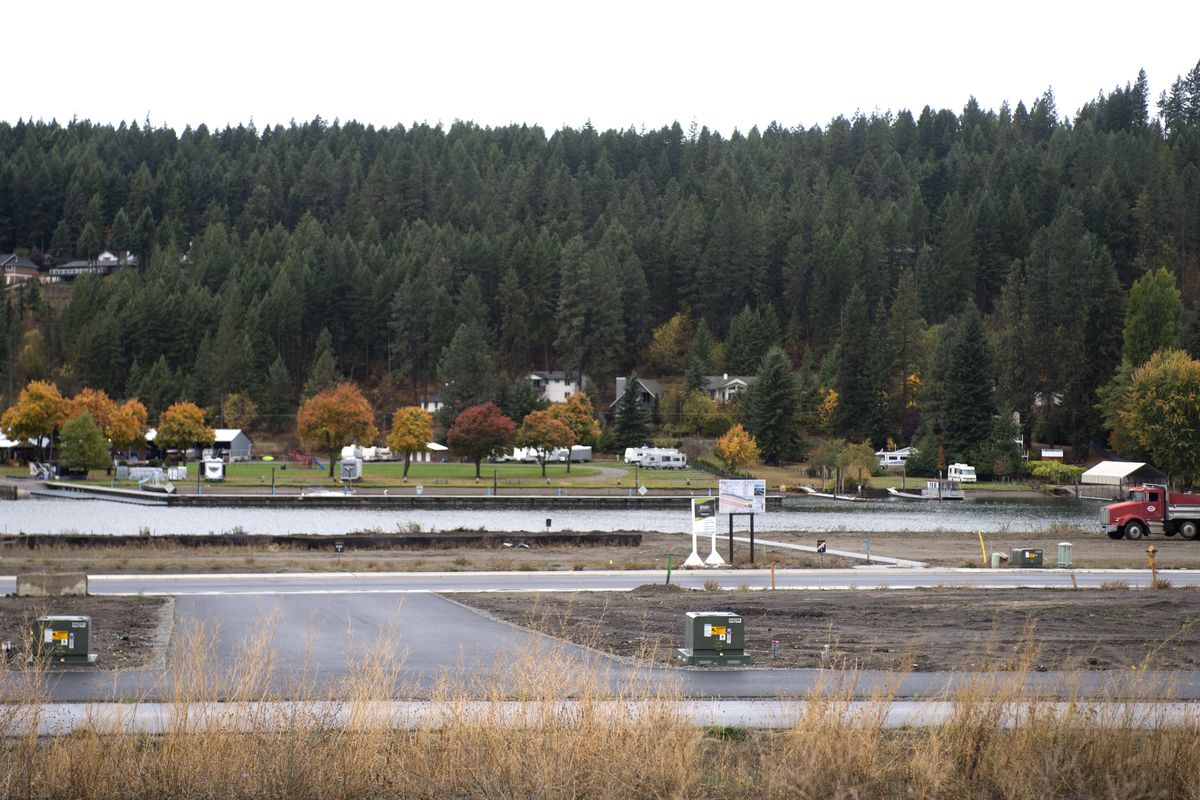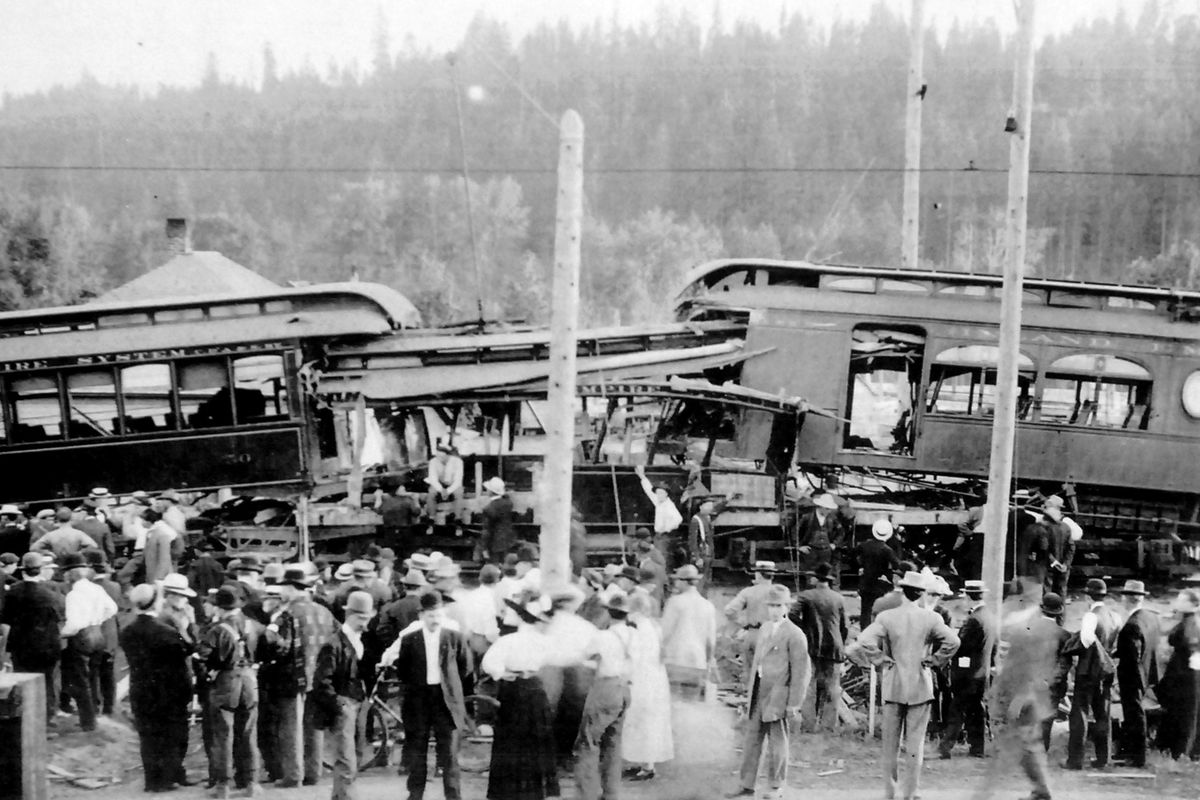Then and Now: The S&IE Railroad crash
Present day: In west Coeur d’Alene, the site is now in the Riverstone development. (Jesse Tinsley)Buy a print of this photo
The 1909 Allotment Act and other executive orders and laws before it sought to manage the distribution of Indian lands. Among the Coeur d’Alenes, the allotment system meant large, successful farming operations were reduced to meager plots of equal size.
The federal government estimated there were 400 Coeur d’Alenes at the time. The federal government then announced a lottery for homesteads on Indian land that was not allotted. Settlers had to submit entries between July 15 and Aug. 5 in Coeur d’Alene that year.
From the turnout, the Coeur d’Alene region seemed to be the most desirable. There was farmland, scenic river valleys and the forests with marketable timber. At the time, the Spokane and Inland Empire Railroad ran an electric train from Spokane to Coeur d’Alene on a single track, and one train would shuttle back and forth. But with thousands of would-be homesteaders heading to the land office in Idaho, dispatchers ordered, by telegraph, a “special” train to leave Coeur d’Alene, then wait at a siding just outside of Coeur d’Alene to let the regular train pass. It was against the rules but a common practice.
On July 31, the regular was late and the special left anyway. It hadn’t arrived at the siding before it met the regular head-on at Gibbs, on the western outskirts of Coeur d’Alene. The trains were 800 feet apart when the motormen, James Delaney and Edgar Campbell, saw each other. Both threw on the brakes but the two trains collided at 20 mph. The regular train was overloaded with people standing in aisles and on platforms. The first few cars were crushed before they stopped. Help arrived quickly, but 12 died at the scene and four more died in the hospital. More than 100 were injured.
Campbell sued his own company for his crushed pelvis, broken arms and amputated leg and received $7,500. The S&IE paid out more than $1 million in damages for the crash. A newspaper report said, “The accident, without parallel in the railroad history of the Northwest, converted the hospital in Coeur d’Alene into a shambles, made two cars into kindling wood and held up trains crowded with land seekers for four hours until the wreckage could be moved.”
– Jesse Tinsley
